It’s a shame that the editorial chaos that consumed Marvel in the mid-to-late 1980s (aka, the end of the Jim Shooter-era) often overshadows the actual content of Marvel comic books during this time period – especially as it relates to the Amazing Spider-Man.
It’s not like the ASM creative team wasn’t without its drama either. The writer/artist combo of Tom DeFalco and Ron Frenz had taken over for one of the most popular tandems in ASM history in Roger Stern and John Romita Jr. and Spider-Man group editor Jim Owsley famously butt heads with DeFalco to the point that the petty conflict bled into the pages of the comics (and that’s how you get Ned Leeds as the Hobgoblin).
But in the midst of this elementary school drama, DeFalco and Frenz pumped out some of my favorite all-time Spider-Man stories in somewhat under-the-radar fashion. For example, when celebrating the 50th anniversary of Spider-Man last summer, how many web sites and comic book blogs dedicated more than a couple of sentences to ASM #271 – arguably my favorite individual issue of the DeFalco/Frenz run?
There’s just so much gold to mine from this comic book – whether it’s the callback to literally the earliest days of Spider-Man’s history and origin story (which is further accentuated by Frenz’s Ditko-esque art and layouts), to the fun and surprisingly poignant resolution to the main Spider-Man conflict, and finally an all-time gut-punch moment for Peter Parker on the issue’s final page.
As the title of the issue implies, DeFalco and Frenz take a time out from the “who is the Hobgoblin” and Secret Wars II narratives to answer the question I bet nobody was asking in 1985: “whatever happened to Crusher Hogan?” For the uninitiated, Crusher Hogan is the “professional” wrestler Peter humiliated in Amazing Fantasy #15, which led to the creation of Spider-Man. Despite the fact that in both AF #15 and in popular culture, Hogan has always been portrayed as an intimidating muscle-head, in a stroke of utter brilliance, DeFalco and Frenz portray the character as being many years past his prime – still reliving his glory years of fighting the guy who went on to be Spider-Man, all while currently working as a janitor at a gym run by the violently corrupt Man-Slaughter.
Interestingly enough, I came to this story a bit later in my comic book reading life than some of you would probably suspect. ASM #271 was one of many issues included in the infamous “big box of comics” I reference here countless times. When I first received the box, I instantly gravitated towards some of the more ballyhooed and famous issues and arcs from the 1980s and 90, i.e. the “Original Hobgoblin Saga,” all of the early Venom stuff, the entire Roger Stern run, the David Michelinie/Todd McFarlane run on ASM and the DeFalco/Frenz black suit/symbiote stories. After consuming those comics, I slowly worked my way through the rest of the box and for reasons I truly can’t explain, never found myself sitting down and reading ASM #271 until only a year or two ago. Once I did that, it was like a bucket of cold water had been dumped on my head. How the hell did I go for so many years as a Spider-Man fan and only read this comic over the past 24 months?
Maybe it was just an instance of judging a book by its cover. While a comic book showing the villain du jour standing dominantly over a fallen Spider-Man should have been enough to entice me, I’ve also have experienced so many awful “here today, gone tomorrow” Spidey adversaries, that Man-Slaughter and his “mayhem” could have easily just ended up being another Stegron or Cyclone. Besides, it’s not like Man-Slaughter is even the draw of this story. Perhaps if Marvel had just put “Whatever Happened to Crusher Hogan” on the front over, I would have been all over this comic like white on rice.
Still, I think the bigger issue is the general perception of the DeFalco/Frenz run. As I earlier alluded to, this tandem just never gets the pedestal treatment from the blogosphere, especially when compared to anything involving Stan Lee, and more recent creative teams like Stern/JRJR, Michelinie/McFarlane and J. Michael Strazcynski/JRJR. The first wave of mid-80s black suit/symbiote stories get some love from readers, but that’s primarily because those issues are part of the foundation for the infinitely more popular Venom stories a few years later. DeFalco and Frenz’s Hobgoblin issues were fun, and introduced the Rose (an underappreciated villain), but didn’t have the fame of Stern and JRJR’s introduction of the character a few years earlier.
Fortunately, I finally rectified my mistake and couldn’t be any happier for doing so. I can’t honestly say that Spidey and Crusher’s interaction went on to be as consequential as the first time the two crossed paths, but DeFalco and Frenz manage to squeeze so many little details and developments that go on to illuminate all of the characteristics I love in a Spider-Man story.
Let’s start with Crusher, who is just so unexpectedly sympathetic and likeable in this story. Others at the gym think he’s a bit nutty, with his fish tales about being the guy who trained Spider-Man for the big time, and yet he’s mostly viewed as a harmless wimp who can be ignored. It makes Crusher’s role in the final confrontation with Man-Slaughter all the more engaging. Like Peter in Amazing Fantasy #15, he has an opportunity to prevent a tragedy when he overhears Man-Slaughter talk about harming Bobby Chance, one of the fighters who won’t throw a match, but he initially hesitates because it’s not his “responsibility.” In Crusher’s case, his knowledge is his power, and as the line goes in Hogan’s very first appearance in Amazing Fantasy #15: “with great power must also come great responsibility.” So, Crusher does in fact act in the nick of time, temporarily saving the Bobby’s life and giving Spider-Man the opportunity to miraculously appear serendipitously (Spidey is actually tailing Aunt May’s then-boyfriend Nathen Lubensky when he hears gunshots at the gym and checks it out).
Sure, it’s a bit of a stretch in the suspension of disbelief department, but in the context of a quick one-and-done story, it totally works.
While the cover indicates that Spidey would have his hands full with Man-Slaughter, in a “shocking” twist, Spider-Man dispatches of the villain, whose superpower is that he can’t feel pain. In a great line, Spidey derides Man-Slaughter by telling him he might be tough for an ordinary person, but certainly not against someone with the “proportionate strength of a spider” (which is one of those Stan Lee lines that seemingly got buried during the transition from the Silver Age to the Bronze Age, but was resurrected in the 80s as Stern/JRJR and DeFalco/Frenz got Spider-Man back to his roots as a character).
Once the fight with Man-Slaughter is over, Spidey bails out Crusher, instantly recognizing that his one-time opponent might have stretches the truth a bit when talking to the other fighters at the gym. So he throws Crusher a lifeline and tells the guys that yes, Hogan trained him.
Spidey’s confirmation is unquestionably a lie, but Crusher has as much to do with the origin and creation of the Spider-Man legend as Aunt May, Uncle Ben and the Burglar. The way Ditko and Lee famously plotted Amazing Fantasy #15, not once single panel of artwork or script is wasted. As such, Peter’s interaction with Crusher is a critical component of the overall story. So, no, Crusher didn’t train Spider-Man, but would there be a Spider-Man if there was no Crusher Hogan?
DeFalco and Frenz look like they’re going to end ASM #271 on a happy note – Man-Slaughter is beaten, Bobby is saved and Crusher is redeemed – and instead end the issue on one of the most devastating Peter/Aunt May exchanges in the history of the title. After May asks Peter to look after Nathan (who got a mysterious phone call earlier in the day), we learn that her boyfriend was viciously beaten because of some gambling debts that he owed. Peter was in fact looking after Nathan, but got distracted by the Man-Slaughter situation and left the scene.
It’s an ending that’s straight out of Ditko/Lee both thematically and visually. Peter immediately realizes that regardless of the decision he made that day, somebody would have gotten hurt and/or killed. His inaction devastates his Aunt May (who twists the knife in even deeper when she tells Peter that he’s not responsible for worrying about her and her life), but wouldn’t Peter have abdicated his responsibility as Spider-Man if he ignored the gun shots and kept following Nathan?
If these questions sound rhetorical and unanswerable, that’s because they are. There is no right decision for Peter here, only wrong ones and that, at the core, is what Spider-Man’s legacy is all about. He’s not superior. He’s not even (truly) amazing. He’s just a regular guy with great power who’s unable to save everything and everyone he cares about despite the responsibility he inherently feels to do so.
All images from Amazing Spider-Man #271: Tom DeFalco, Ron Frenz & Josef Rubinstein

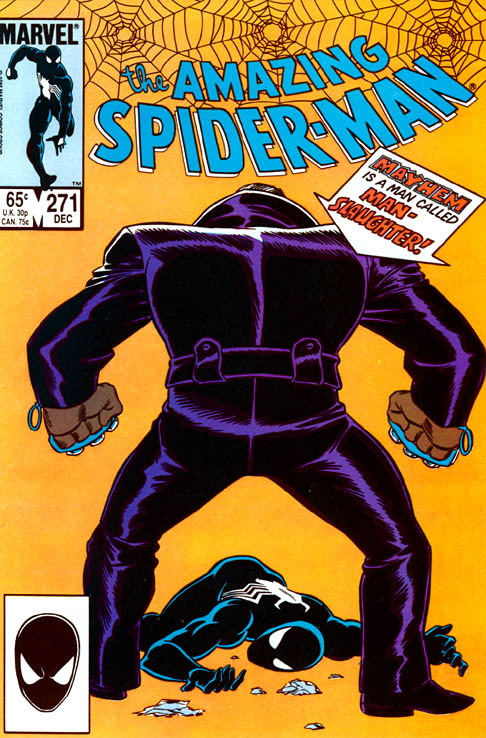
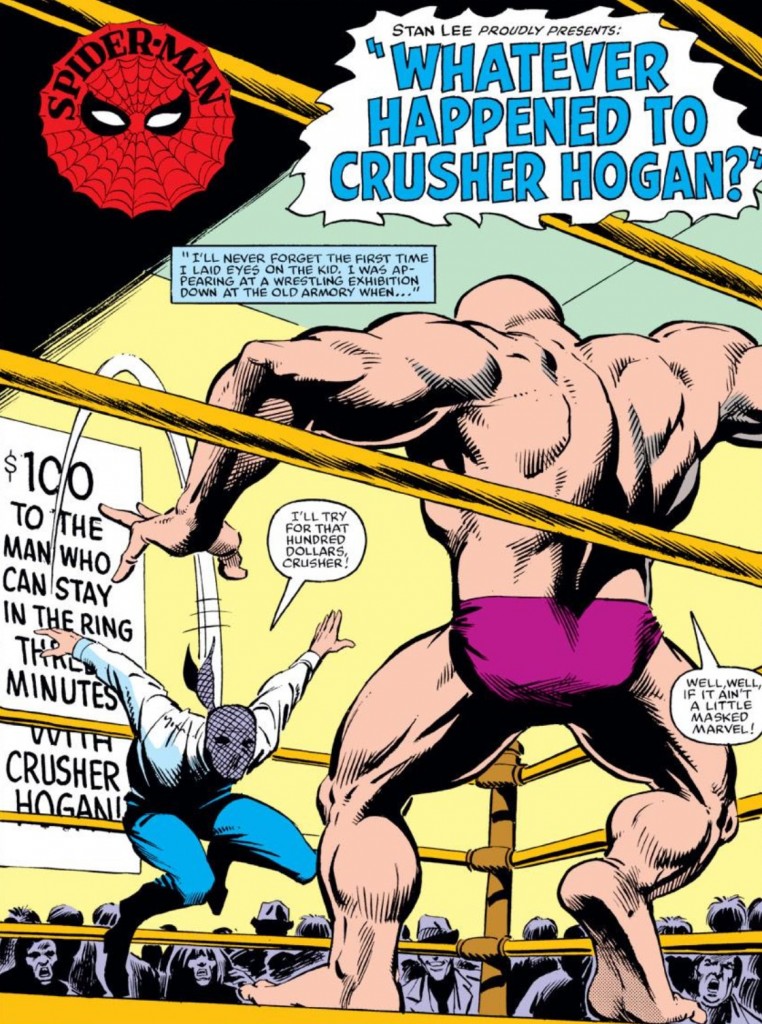
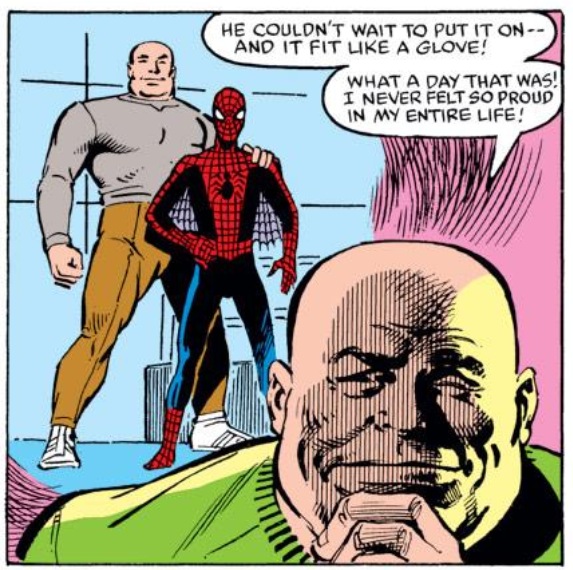
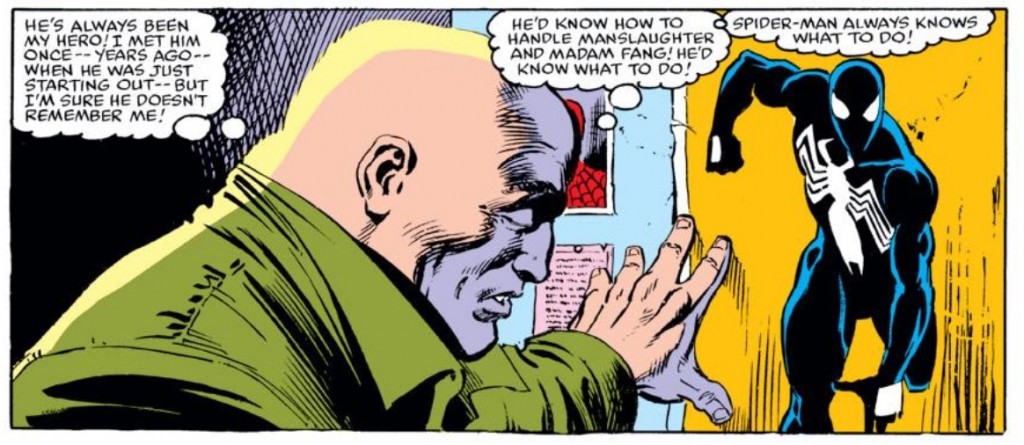
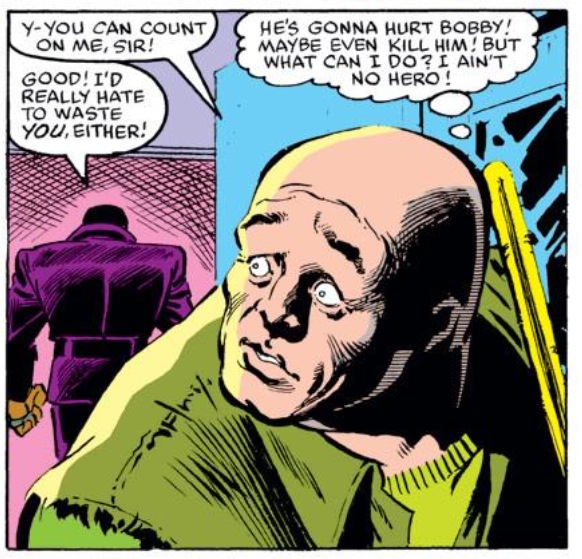
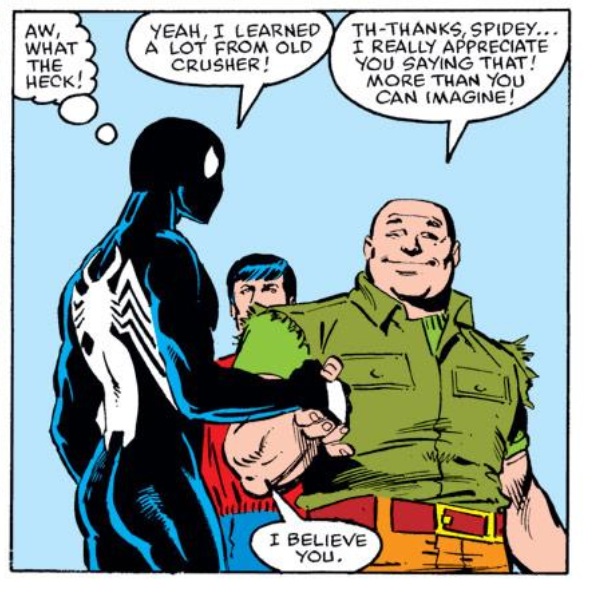
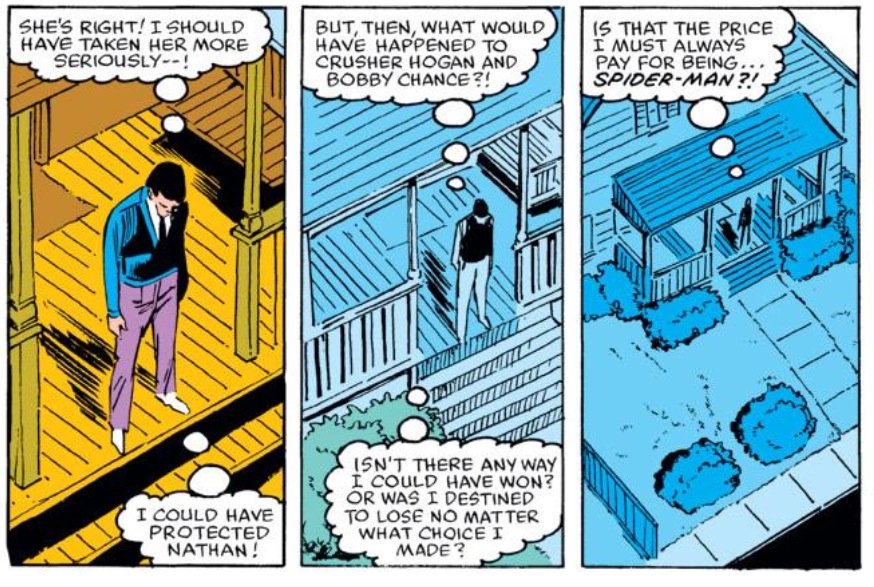

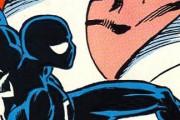
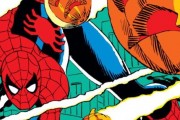
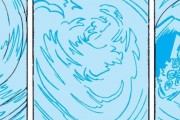
This has always been one of my favorite issues and one of the first ones I got as a child. I found it really interesting when Ron Frenz told us about how Manslaughter’s look was drastically changed my the inker and colorist in this issue in our interview with him:
http://superiorspidertalk.podomatic.com/entry/2013-09-12T03_00_00-07_00
I used to dismiss this one as another fill-in – Amazing Spider-Man got very bitty in the 260s and early 270s with a run of inconsequential one or two issue storylines, several by other writers and artists, whilst waiting for the next Hobgoblin or Secret Wars development and it was as though stories were being randomly grabbed from the files. Perhaps that’s why this era doesn’t get the affection of those either side despite containing some incredible moments.
But this issue is deeper, looking back to the character’s roots at the same time as it’s setting up Peter’s increased doubts about his ability to maintain his identity and life at the same time, issues that would try to play out during the next phase of the Hobgoblin saga before crashing on the rock of editorial turbulence.
‘…I bet nobody was asking in 1985: “whatever happened to Crusher Hogan?”’
It’s a homage to a thing DC used to do a lot of – DC Comics Presents would often run a back-up story “Whatever happened to…” temporarily rescuing a character from obscurity whether it was the Golden Age Atom or Rex the Wonder Dog or whoever.
I would argue in retrospect, that some of those “one-off” issues from this era ended up being better than the bigger concept stuff – beyond this one, you have Peter David’s “When Cometh the Commuter,” the Firelord two-parter which is one of my favorite Spidey battles ever, and the Frog Man/Toad on-off (again, PAD), which is just great fun.
This was always one of my favorites as well. Beyond the return of Crusher Hogan, I also liked it because I was a boxing fan as a teenager. This was right around the time Mike Tyson was coming onto the scene, and he had a mystique that’s sorta hard to describe…and boxing was bigger back then anyway, with Muhammad Ali having recently retired, and Sugar Ray Leonard was still active. (I wonder if there’s an inherent connection between boxing and comics? I’ve noticed that some boxing writers reference comics on occasion.) Have to say though that this issue has one of the ugliest covers of all time. Maybe that’s why you waited so long…